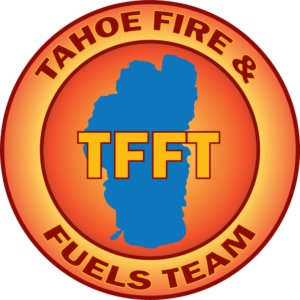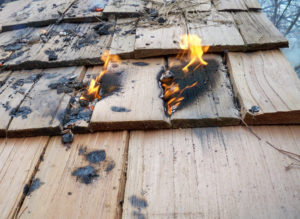Be Ember Prepared
September 11th, 2019PRESS RELEASE
Tahoe Fire and Fuels Team
For Immediate Release, September 11, 2019
Contact: Jamie Roice-Gomes, Living With Fire Program Manager, 775-336-0261, Carlie Murphy, Tahoe RCD 530-543-1501 ext. 114
Be Ember Prepared
What homeowners can do to reduce the wildfire threat
LAKE TAHOE, Calif. / Nev. – Devastating wildfires occur year-round and as the air becomes chilly and the leaves begin to fall, residents are urged to prepare even during the Fall season. One of the ways residents can reduce the wildfire threat is by preparing for embers.
Embers, or pieces of burning material, can travel a mile or more ahead of a wildfire. During a wildfire, thousands of embers can rain down on your roof and pelt the side of your home like a hail storm. If these embers come in contact with flammable material on, in or near your house, it can ignite. In 2008, an Australian researcher estimated that 90% of all homes ignited in wildfires were due to embers.
Being prepared for embers involves creating defensible space and ensuring the home has proper building materials. The following is a list of ways residents can prepare:
Recommended building materials:
- Replace wood shake and shingle roofs with Class “A” fire-rated roofs such as composition, cement tile or metal.
- Cover attic and foundation vents with one-eighth inch wire mesh or install ember-resistant vents.
- Replace single-pane windows with windows that are at least double-paned. Close all windows if a wildfire is threatening.
- Use concrete or mortar to plug roof openings, such as the open ends of barrel tiles and gaps between tiles along the ridge.
- Do not store combustible materials under the deck. Instead, enclose deck sides with one-quarter inch or smaller wire mesh to prevent debris from accumulating underneath.
Be ember prepared by utilizing the following defensible space recommendations:
- Keep rain gutters and roofs free of pine needles and other flammable debris.
- Move your firewood pile at least 30 feet away from the house.
- Remove pine needles and other plant debris from the cracks between deck boards. Clean flammable debris from the deck surface.
- Create a noncombustible area at least five feet wide around the base of the house using gravel, rock, concrete, or irrigated lawn / irrigated plants with high moisture content.
- Avoid planting evergreen shrubs, such as juniper, next to the house, in front or below vent openings or in front of windows.
- Do not use wood or bark mulches near the home.
- Remove dead vegetation and weeds from around the home.
For more information on preparing your home and property to survive wildfire and to join the Tahoe Network of Fire Adapted Communities, visit Tahoe.LivingWithFire.info.
###
Photo Cutline: Embers ignite a wood-shake roof. Photograph courtesy of University of Nevada Cooperative Extension.
About the Tahoe Fire and Fuels Team
The Tahoe Fire and Fuels Team (TFFT) consists of representatives of Tahoe Basin fire agencies, CAL FIRE, Nevada Division of Forestry and related state agencies, University of California and Nevada Cooperative Extensions, the Tahoe Regional Planning Agency, the USDA Forest Service, conservation districts from both states, the California Tahoe Conservancy and the Lahontan Regional Water Quality Control Board. Our mission is to protect lives, property and the environment within the Lake Tahoe Basin from wildfire by implementing prioritized fuels reduction projects and engaging the public in becoming a Fire Adapted Community.
For more information, visit www.tahoe.livingwithfire.info/about/


